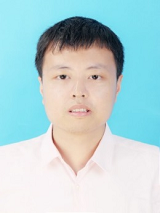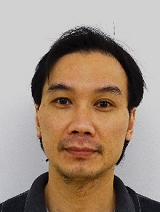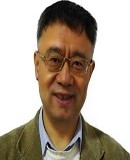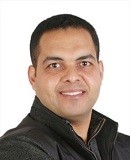We're searching for more keynote speakers! Experts in the area of Energy Material and Energy Technology are welcome to join the conference. In principle, the applicant should be above associate professor, researchers, and engineers.
If you would like to join as EMET keynote speaker, please send your latest CV, recent photo, speech title and abstract to info@emetconf.org.
 |
Zhiyuan Zhu
Professor
Southwest University, China
Title:
Self-powered microsystem
Abstract:
Triboelectric nanogenerators (TENGs) is an emerging approach which can scavenge the mechanical energy from ambient environment based on the combination of contact electrification and electrostatic induction. It has been demonstrated to be a robust power source, and exhibits more attractive potential due to its outstanding characterizations of sustainability, high-output performance, and unrestricted material selection. Therefore, it is a promising and attractive approach for achieving self-powered microsystems combined with functional device. Due to its unrestricted material selection property, the TENGs can be fabricated using various commercial commodities material, which largely reduce the cost. In addition, TENGs provide the possibility of serving as both sustainable power sources and active sensors simultaneously, which creates a new blueprint of self-powered flexible microsystems that can sense, process and respond to the environmental changes with no need for external power source.
|
 |
Wing Chung Tsoi
Associate Professor
Swansea University, UK
Title:
Perovskite solar cells for aerospace applications
Abstract:
Perovskite solar cells with high power-per-weight have great potential to be used for aerospace applications such as satellites or high-altitude pseudo-satellites (HAPS). However, before they can be deployed into space, their resistance to ionizing radiations, such as high-energy protons, must be demonstrated. Herein, the effect of 150 keV protons on the performance of PSCs based on aluminum-doped zinc oxide (AZO) transparent conducting oxide (TCO) is investigated. A record power conversion efficiency of 15% and 13.6% is obtained for cells based on AZO under AM1.5G and AM0 illumination, respectively. It is demonstrated that PSCs can withstand proton irradiation up to 1013 protons/cm2 without significant loss in efficiency. From 1014 protons/cm2, a decrease in short-circuit current of PSCs is observed, which is consistent with interfacial degradation due to deterioration of the Spiro-OMeTAD holes transport layer during proton irradiation…
|
 |
Anjie Li
Associate Professor
Beijing Normal University, China
Title:
Biodiesel production using chemical energy contained in biological wastewater treatment systems
Abstract:
Emissions of CO2 from fossil fuel combustion and industrial processes contributed about 78% of the total GHG (greenhouse gas) emissions. Biodiesel, a renewable and clean-burning biofuel, can replace fossil fuel to mitigate GHG emissions because of its lower coefficient for CO2 emissions (1.632) compared with that of fossil fuel (2.1707). However, biodiesel production using food crops is an industrial reality but not efficient in the reduction of GHC. Therefore, wastewater and excess sludge that can fulfill the requirements of lipid feedstock for biodiesel production due to its low cost and continuous supply were used in this study…
|
 |
Ji Wang
Professor
Ningbo University, China
Title:
The extended rayleigh-ritz method for static and dynamic nonlinear analyses of structures
Abstract:
An extension has been made with the popular Rayleigh-Ritz method by integrating the energy functional over one period of vibration to eliminate the harmonics from the deformation function for analyses of steady vibrations. Then a nonlinear eigenvalue problem is obtained from the stationary condition of the energy functional for the amplitude dependence of nonlinear deformation and vibrations. This is an extension of the popular Rayleigh-Ritz method from the energy formulation and Galerkin method with the inclusion of time factor in nonlinear equations. For nonlinear vibration analysis, which is equivalent to the harmonic balance method. This proposed Extended Rayleigh-Ritz Method (ERRM) has been validated by examples of typical nonlinear problems of static and dynamic structural problems...
|
 |
Ahmed Mourtada Elseman
Associate Professor
Central Metallurgical Research & Development Institute (CMRDI), Egypt
Title:
Efficient inverted perovskite solar cells based on zno nanorods as advanced cathode buffer layer
Abstract:
It is of great importance to develop cathode buffer layers (CBLs) based on advanced nanomaterials to provide high power conversion efficiency (PCE) and optimized electron collection for an inverted perovskite solar cells (PSCs). This research developed ZnO-nanorods (ZnO-NRs) with 30-40 nm in diameter and ˂ 1 µm in long, which is confirmed by XRD, HRTEM, FESEM, DLS, and EDX analyses. Herein, planar PSCs (p−i−n) was successfully fabricated with device structure (ITO/PEDOT:PSS/CH3NH3PbI3−xClx/PC61BM/CBLs/Ag) based on (CBL = ZnONRs and bathocuproine (BCP) as composite (ZnO-NRs:BCP). Compared to a single layer of ZnONRs or BCP, the present ZnO-NRs:BCP composite has demonstrated a compact, defect-less thin film and better coverage on the perovskite/PC61BM surface. Such a composite layer and the morphology of ZnO as nanorods help reduce interface charge recombination and improving device performance...
|
 |
Abd El-Fatah Abomohra
Professor
Chengdu University, China
Title:
Waste: Old Energy Source, New Energy Technologies
Abstract: In the context of energy consumption, over 85% of the current total energy consumption comes from non-renewable fossil resources. Developing new renewable energy resources, especially biofuel production from wastes, has received increasing attention. Although production of energy from waste is not new aspect, there are many advanced technologies have been developed to harness the energy recovery from waste. On the other hand, many countries established regulatory guidelines for proper waste management and raised pollution control measures. Most of the applied routes are waste dumping, composting or direct discharge in water bodies without adequate pretreatment, which seriously threaten the environment and humans. Thus, proper waste segregation and separation provide an efficient option for waste conversion into energy. Waste-to-energy is nowadays a widely used statement for efficient waste management, which is getting much attention...
|